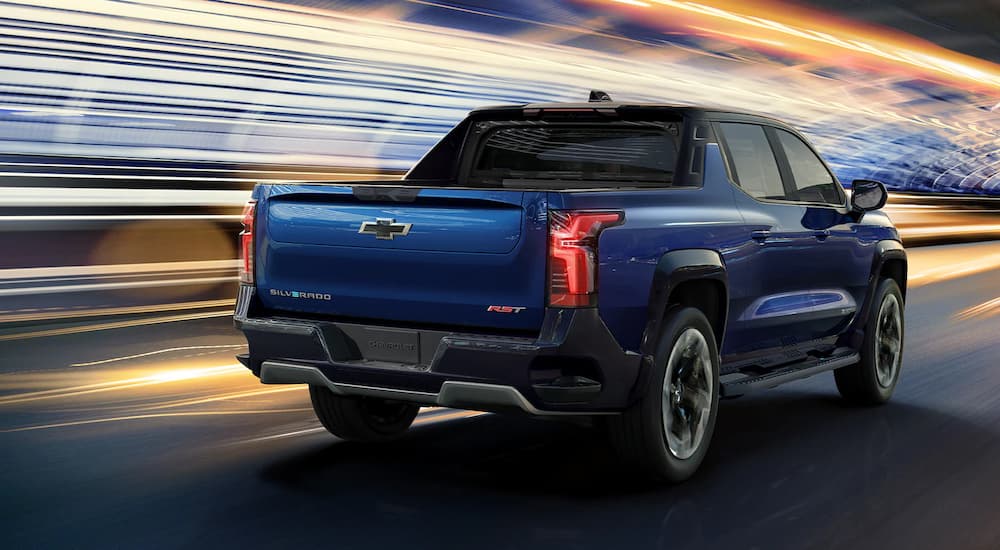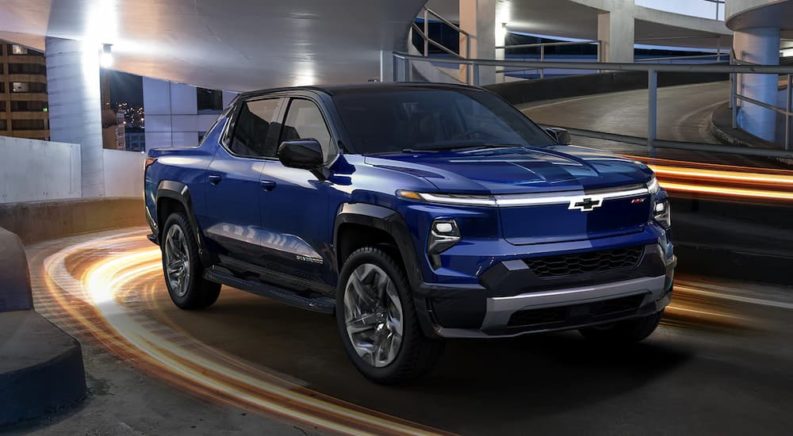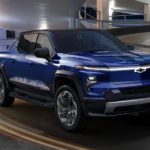After months of speculation and just enough teasers to keep the rumor mill alive with excitement, GM finally unveiled the all-new 2024 Chevy Silverado EV. Have you seen it and, if so, are you impressed? Did you immediately think of the Avalanche of years past? Trust us; you’re not alone as the Silverado EV looks more like its distant cousin than its namesake, and that gives everyone plenty to discuss.
The Silverado EV’s debut has the industry abuzz over everything from its Avalanche-like design to its capability. Can an electric truck continue the legacy of Chevy’s iconic road warrior, or should we all go ahead and lower our expectations for these trucks of the future? GM promises there’s no need to worry thanks to its revolutionary Ultium platform on which the Silverado EV is built. So, what is Ultium, and how does it impact the 2024 Silverado EV? From its design and capability to its power and efficiency, this is Ultium, the heart and soul of the 2024 Silverado EV.
Ultium: What Is It?
It’s no secret that GM plans to pioneer an all-electric future with zero crashes, zero emissions, and zero congestions. To do that, the automaker looked at the segment’s largest limitation–cost. Producing electric vehicles isn’t cheap, which means buying and maintaining them is no small investment. GM, however, is determined to change that with its revolutionary Ultium platform.
The Ultium platform is modular and versatile, which means GM can use it in everything from models like the GMC Hummer EV to trucks like the Silverado EV. This versatility reduces the cost of its production and replacement by up to 60 percent, which is passed on to buyers. The platform’s modularity also means that you have more control over the vehicle’s configuration and power delivery, just as you would on the Silverado’s gas and diesel-powered lineups.

Design: A Silverado or an EValanche?
Because of Ultium, the 2024 Silverado EV isn’t like any other gas or diesel-powered Silverado you’ve come to know and love. Redesigned from the ground up, the Silverado EV is based on the Ultium platform, and that means a unibody design rather than the traditional truck cab with its separate bed. This likens the Silverado EV to the Avalanche of years past, a popular truck for Chevy because of its versatility, practicality, and capability.
The Silverado’s unibody design also means fewer choices when it comes to the truck’s configuration. You only have one option–a crew cab with a standard bed length. The Silverado’s 5-foot 11-inch bed might seem limiting to those who prefer longer beds, but Chevy answers that need with the innovative Multi-Flex Midgate. Another Avalanche-inspired feature, the midgate, gives you the ability to extend the length of the bed to 9 feet without sacrificing the spaciousness and comfort of passengers in the second row. By adding the Multi-Flex Tailgate to the Silverado EV, you gain another foot of space when using the primary gate load stop.
Power: Will It Uphold the Silverado’s Reputation?
GM’s Ultium platform solves several problems in the growing EV segment–affordability, versatility, and capability. For starters, the Ultium platform is modular, and that allows GM to use it across its entire lineup, as we mentioned. This makes it more affordable to build and, in turn, more affordable to customers. As far as versatility and capability, the 2024 Silverado EV says all it needs to when you step on the accelerator.
The Silverado’s Ultium platform promises a 400-mile range, up to 664 horsepower, and over 780 lb-ft of near-instant torque for intuitive handling and quick acceleration. On the RST, this power translates to a launch from 0 to 60 mph in just 4.5 seconds, a remarkable time for a truck of its size. But how does this power compare to the latest gas and diesel-powered Silverados?
The 2022 Silverado offers a wide range of power and capability with the 3.0-liter Duramax Turbo-Diesel churning out 277 horsepower and 460 lb-ft of torque, while the base 2.7-liter High Output engine delivers 310 horsepower and 430 lb-ft of torque. This broad spectrum of power gives the 2022 Silverado the ability to tow anywhere from 9,500 to 13,300 pounds depending on the powertrain.
The 2024 Silverado EV continues the Silverado’s reputation as a workhorse with a 10,000-pound maximum trailering capacity and a 1,300-pound payload on the RST. The WT or Work Truck also delivers impressive power and capability, with its battery churning out 510 horsepower and 610 lb-ft of torque to offer a maximum towing capacity of 8,000 pounds and a payload of 1,200 pounds. Chevy plans to introduce an even more capable Silverado EV that will boost the truck’s towing capacity to 20,000 pounds, which will drastically impact how businesses operate by reducing transportation costs with its exceptional efficiency and capability.

Innovation: How Tech-Savvy Is the Silverado of the Future?
GM’s Ultium platform extends beyond the truck’s frame and capability to a host of cutting-edge features that reflect how the truck will usher us into a brighter and more connected future. This is apparent in GM’s all-new Ultifi software platform, aptly named for the revolutionary Ultium platform. GM introduced Ultifi in late 2021 as an extension of the automaker’s Vehicle Intelligence Platform that offers over-the-air updates, enhanced cybersecurity, lightning-fast processing, and seamless connectivity. In short, Ultifi turns the Silverado EV (and any equipped vehicle) into a smart truck that works a lot like your smartphone.
Ultifi separates the Silverado’s hardware from its software and automatically sends over-the-air updates to the truck. This ensures the Silverado EV is always running the latest software, optimizing its performance and capability while minimizing downtime. There’s no reason to visit the dealership to update the truck’s software since it’s programmed to update itself anytime there’s a WiFi connection.
While Ultifi works behind the scenes on the Silverado EV, GM has big plans to extend the system to make your time behind the wheel even better. You can see this firsthand with the Silverado EV’s hands-free start, which automatically turns the truck on when it detects your smartphone, allowing you to keep your hands free to fasten your seatbelt and set out for the open road. Future updates will eventually add facial recognition, allowing you to start the vehicle’s engine with a quick facial scan similar to how you unlock your smartphone. The over-the-air updates will also report real-time traffic data that will actively help you avoid hazards, accidents, and other conditions to make your time on the road more enjoyable and stress-free.
A Modern Marvel on Wheels
The Silverado EV has been a hot topic of conversation and continues to make waves with its recent debut. While some people appreciate its Avalanche-inspired design, others were hoping for the iconic Silverado with a modern twist. The truck’s price tag also leaves many looking for an affordable middle ground, with the fleet-ready WT starting around $39,000 and the opulent RST priced over $100,000. Right now, it’s the bare-bones model or all the bells and whistles; there’s no in-between.
Despite this hotbed of debate, one thing is certain, and that’s how GM’s Ultium platform is changing the EV segment. The modular Ultium platform proves that even an all-electric truck like the Silverado EV can be both extremely capable and efficient. The platform leaves very little question about the truck’s status as a road warrior, which is a good sign of what the future holds as the American automotive industry lays the foundation for an all-electric future.




